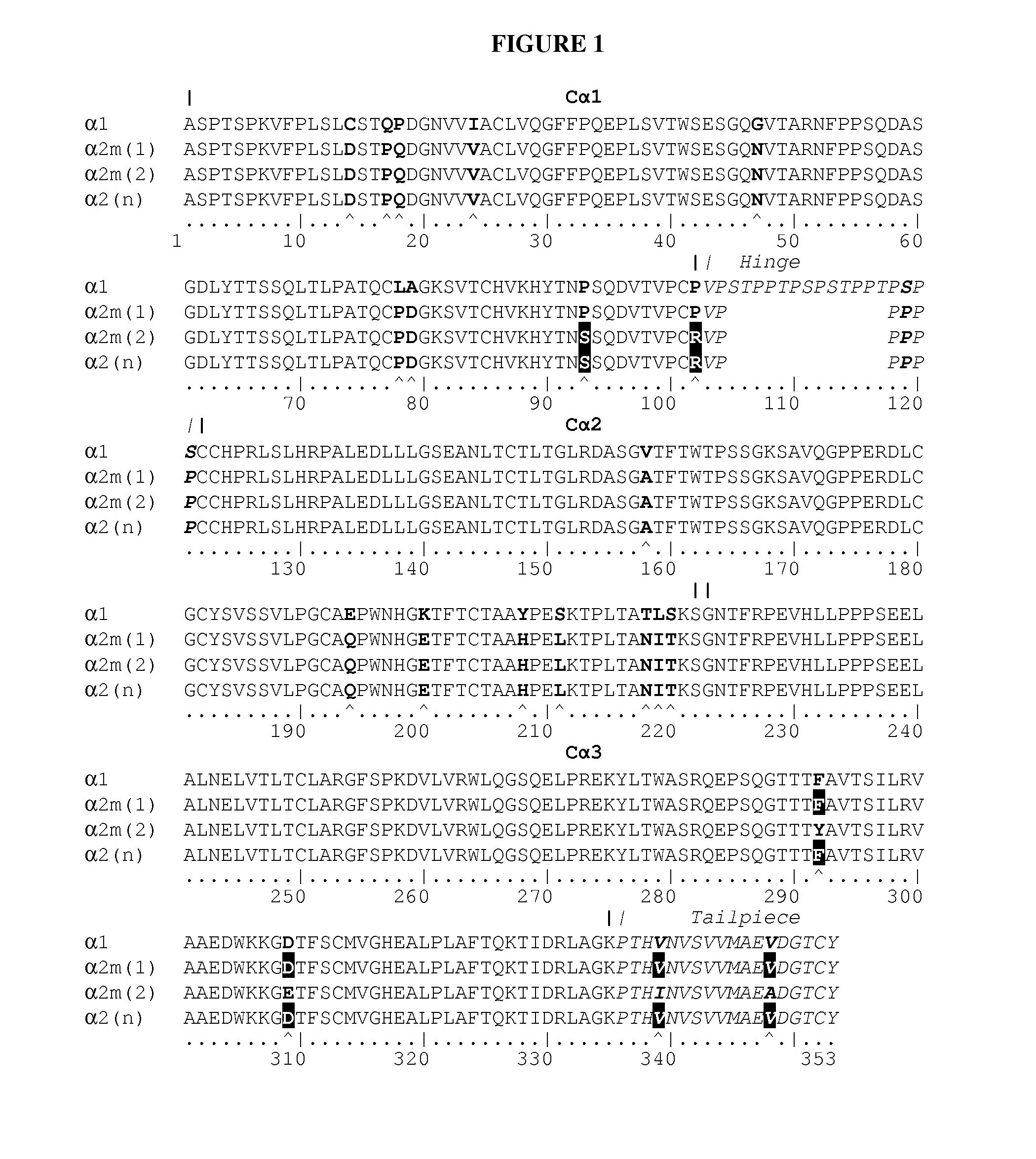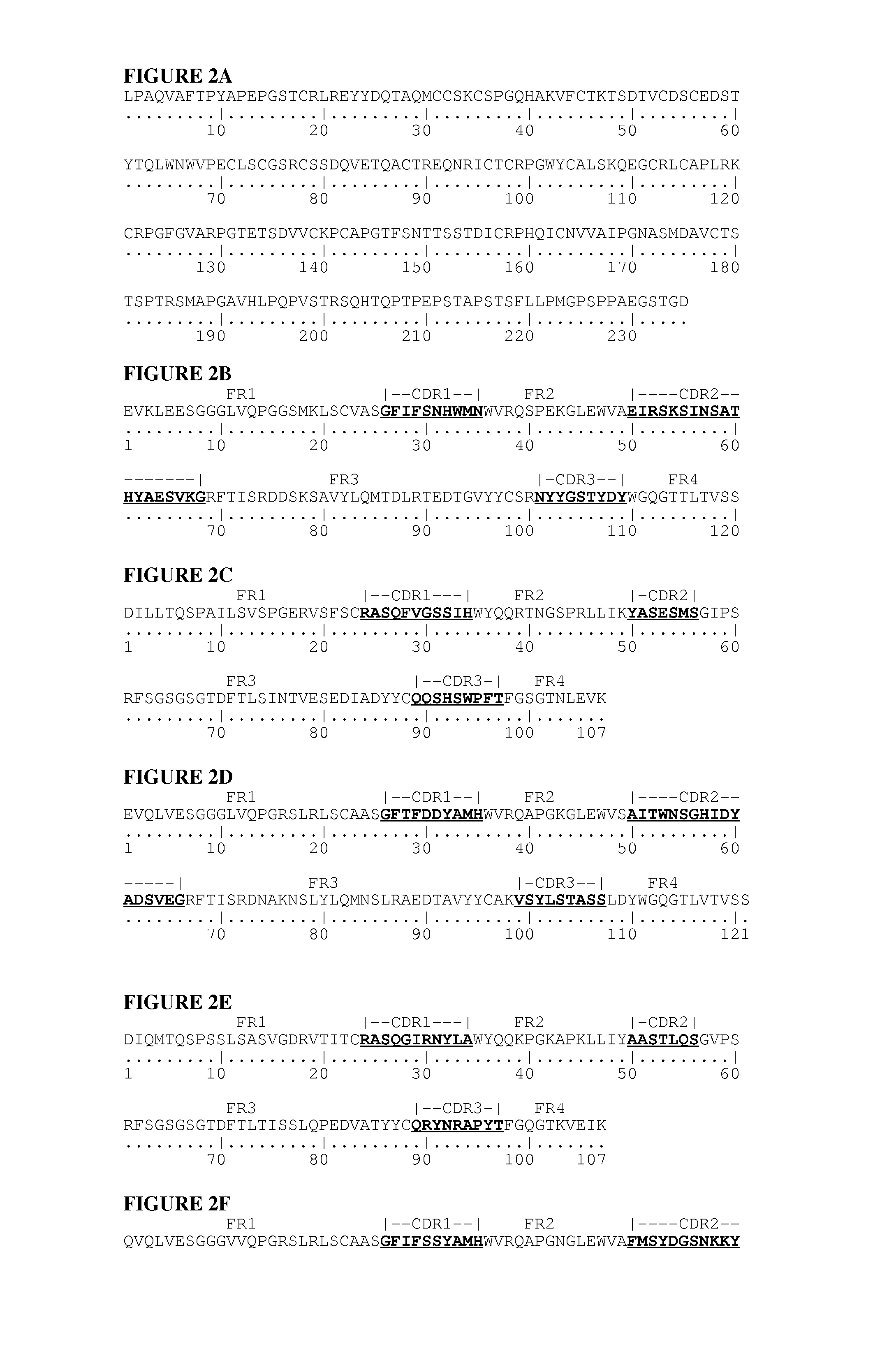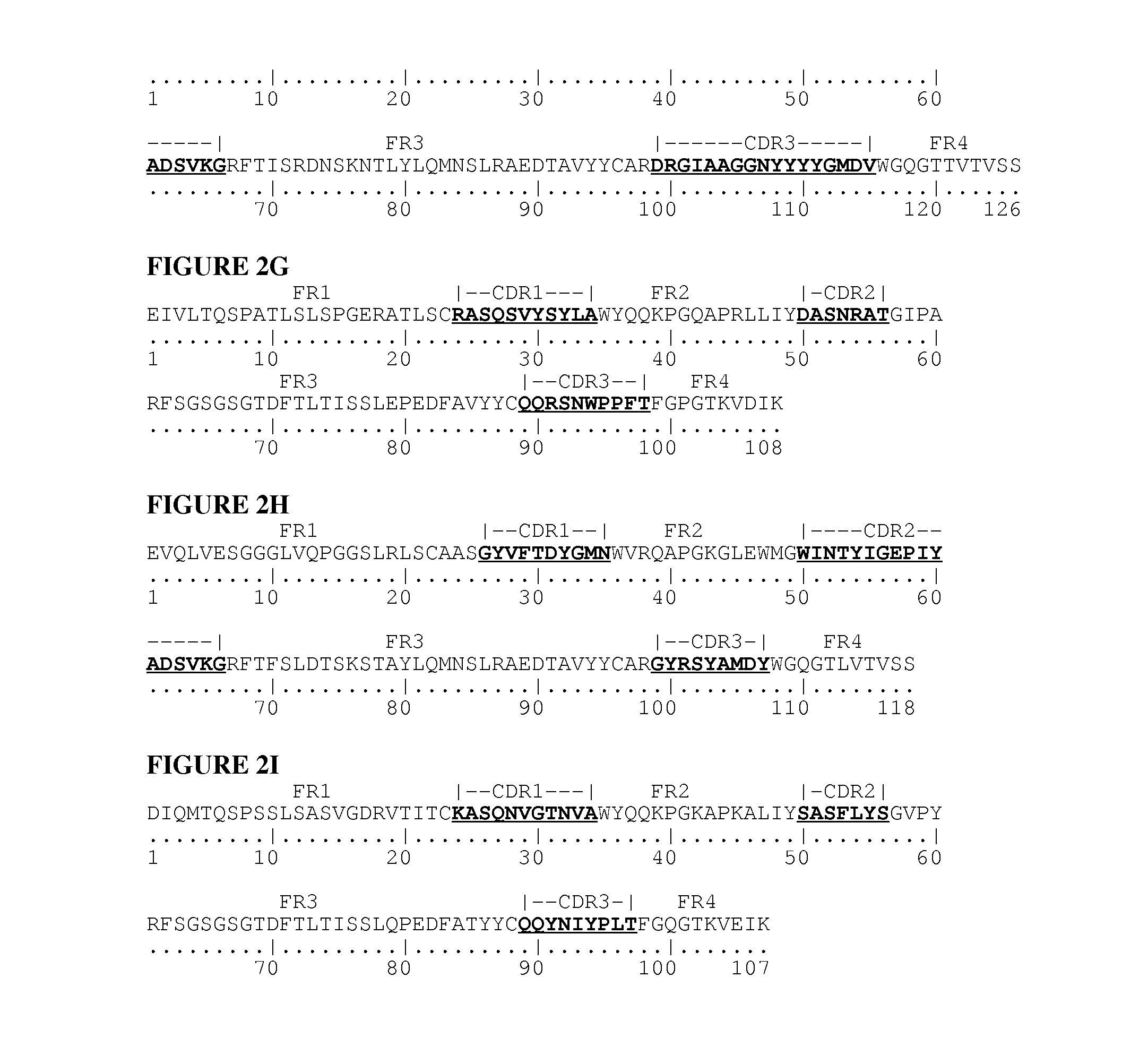Compounds and methods for treating inflammatory diseases
a technology of iga and compound, which is applied in the field of monoclonal secretory iga antibodies, can solve the problems of igg-based anti-tnf compounds that suffer from one or more undesirable effects, systemic depletion of tnfalpha furthermore increases the risk of infection of patients
- Summary
- Abstract
- Description
- Claims
- Application Information
AI Technical Summary
Benefits of technology
Problems solved by technology
Method used
Image
Examples
example 1
Transient Expression of an Anti-TNF-α Secretory Protein Based on Infliximab (IIB-SA2n) in Plants
[0149]a) Preparation of cDNA Constructs
[0150]The amino acid sequences of a suitable leader sequence (e.g., secretion signal, SEQ ID NO:23), the heavy chain variable region of infliximab (SEQ ID NO:2), and the human α2(n) IgA heavy chain constant region (Chintalacharuvu et al., Journal of Immunology, 1994, 152, 5299-5304; SEQ ID NO:13) were joined together. Cleavage of the signal sequence (a.a. 1-19) corresponded to the predicted cleavage site using the SignalP program (http: / / www.cbs.dtu.dk / services / SignalP).
[0151]The resulting amino acid sequence was back-translated into a cDNA sequence optimized for expression in maize (Z. mays) (SEQ ID NO:27) (see Liangjiang Wang and Marilyn J. Roossinck., “Comparative analysis of expressed sequences reveals a conserved pattern of optimal codon usage in plants.”Plant Mol Biol (2006) 61:699-710).
[0152]Similarly the cDNA sequence for the light chain of t...
example 2
Expression of an Anti-TNF-α Secretory Protein Based on Infliximab (IIB-SA2n) in Mammalian Cells
2a: Transient Expression of IIB-SA2n
[0166](1) Vector Generation:
[0167]cDNAs encoding SIgA heavy chain (HC), light chain (LC), J-chain, and SC-chain were cut from the pGA14 and pGA15 plasmids described in Example 1. The excised HC and LC sequences were PCR amplified and cloned into pMQR-hIgG1 (Neo) to give pMQR-zma2-iib (Neo) and pMQR-zmκ-iib (Neo) vectors. Similarly, the excised J-chain and SC-chain were PCR amplified and cloned into pMQR-kappa (Hygro) to give the pMQR-zmJ (Hygro) and pMQR-zmSC (Hygro) vectors. The pMQR-hIgG1 (Neo) and pMQR-kappa (Hygro) vectors are based on the pcDNA3 (Invitrogen) backbone, which was modified to receive any combination of Ig V- and C-region “cassettes”. This was performed by subcloning well-defined genomic Ig gene segments into pcDNA3, after which silent mutations were introduced flanking the V- and C-regions to create restrictions sites allowing for the ...
example 3
Purification of Anti-TNF-α Secretory IgA Antibodies (IIB-SA2n and IIB-SA1) from Mammalian Cell Culture
[0186]3a—Affinity and SEC (IIB-SA2n)
[0187]The supernatant obtained from the transient expression of IIB-SA2n in HEK-293-EBNA1 cells using polymer transfection (experiment 2a(5)) was purified using affinity chromatography with an anti-IgA lama antibody fragment immobilized on sepharose (CaptureSelect human IgA, BAC, product code 2880) followed by SEC.
[0188](1) Affinity Chromatography:
[0189]Anti-human IgA matrix (Capture Select) was poured into a XK16 / 20 column (16×200 mm) in 20% ethanol in MilliQ water at a flow rate of 15 ml / min. After adjusting the position of the upper flow adaptor, the column was equilibrated in PBS buffer pH 7.4. The HEK-cell culture medium was filtered to remove large cell debris and subsequently loaded on the pre-equilibrated anti-human IgA column with a flow rate of 4.5 ml / min. After washing with 10 column volumes PBS pH 7.4, the active secretory IgA antibody...
PUM
| Property | Measurement | Unit |
|---|---|---|
| Fraction | aaaaa | aaaaa |
| Fraction | aaaaa | aaaaa |
| Fraction | aaaaa | aaaaa |
Abstract
Description
Claims
Application Information
 Login to View More
Login to View More - R&D
- Intellectual Property
- Life Sciences
- Materials
- Tech Scout
- Unparalleled Data Quality
- Higher Quality Content
- 60% Fewer Hallucinations
Browse by: Latest US Patents, China's latest patents, Technical Efficacy Thesaurus, Application Domain, Technology Topic, Popular Technical Reports.
© 2025 PatSnap. All rights reserved.Legal|Privacy policy|Modern Slavery Act Transparency Statement|Sitemap|About US| Contact US: help@patsnap.com



